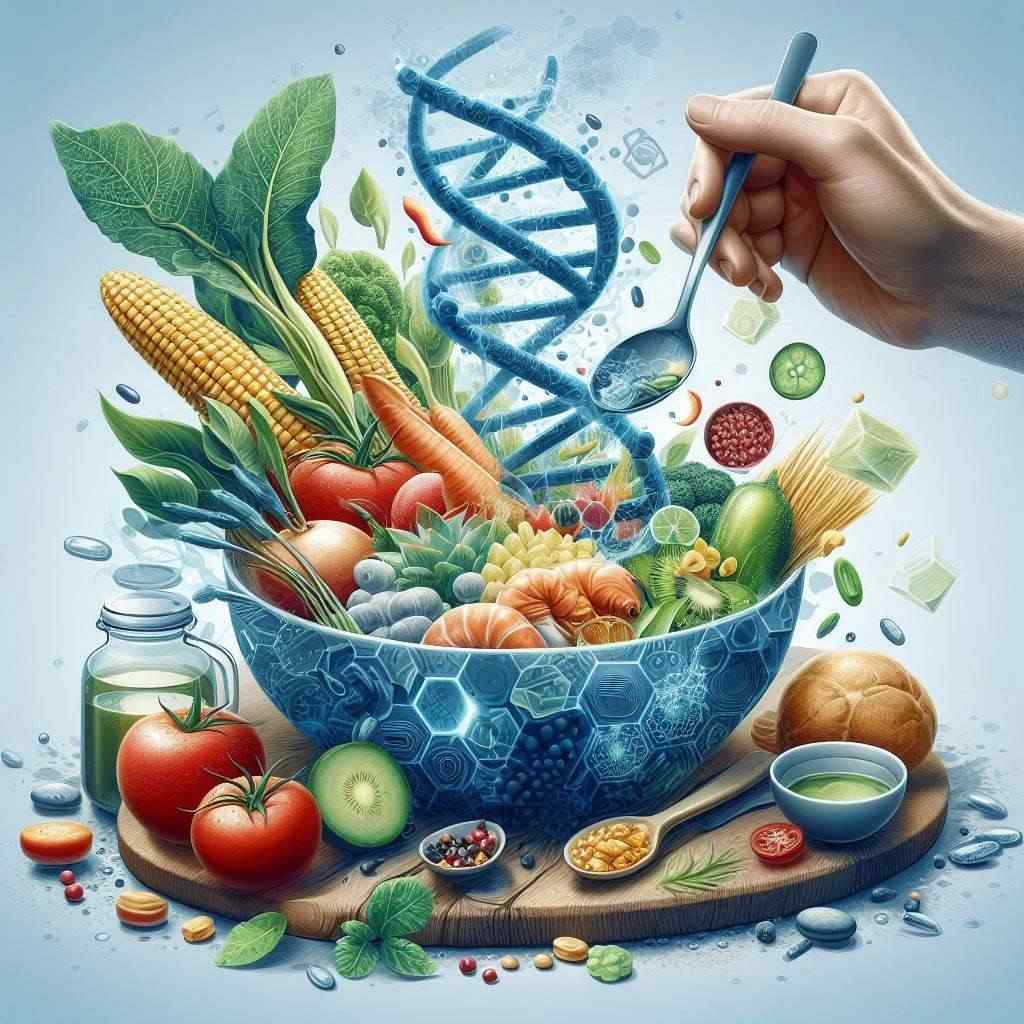Dive into the influence of abiotic factors on cooking with our insightful guide on soup recipes. Discover how elements like temperature regulation, water quality, and pH balance can significantly impact the flavor and consistency of your soups. Whether crafting hearty vegetable broths or savory vegetarian options, understanding these non-living factors will transform your cooking process.
Achieving the perfect soup requires more than just assembling ingredients. Mastering abiotic elements such as heat levels and pH can enhance both taste and efficiency. By controlling these factors, you’ll unlock the secrets to consistently delicious soups and elevate your culinary expertise.
Understanding Abiotic Factors in Soup Recipes
Abiotic factors are often underestimated in the culinary world. However, they significantly impact how ingredients interact with one another, ultimately affecting the final dish. In soups, these factors can dictate everything from texture to flavor depth.
- Temperature Control:
Temperature is a vital abiotic factor. Cooking at the right temperature ensures that ingredients release their flavors without becoming overcooked. Whether it’s simmering a broth or boiling vegetables, maintaining the correct temperature is key.
- Water Quality:
The type of water used in soup preparation plays a vital role in determining its flavor. Using hard water may result in an unpleasant taste, impacting the overall quality of the dish. Using filtered or distilled water can result in a cleaner, more vibrant flavor.
- pH Levels:
The acidity or alkalinity of your soup can alter the taste significantly. Knowing how to balance pH levels can help you achieve a well-rounded flavor profile.
Exploring Vegetable Soup Recipes Abiotic Factor
Vegetable soups offer a playground for experimenting with abiotic factors. From hearty broths to creamy bisques, understanding how non-living elements affect your ingredients can result in superior soups.
- Heat Distribution:
Even heat distribution is crucial for vegetable soups. Uneven cooking can result in some vegetables being mushy while others remain undercooked.
- Water-to-Vegetable Ratio:
The amount of water used can drastically alter the soup’s texture and flavor. Too much water dilutes the taste, while too little can make it overly concentrated.
- Timing:
Different vegetables have different cooking times. Adding them in stages ensures each ingredient retains its optimal texture and flavor.
How Abiotic Factors Influence Soup Recipes
These elements can make or break the flavor and texture of your dish.
- Temperature Variations:
Different temperatures extract flavors in various ways. For example, simmering extracts flavors gradually, while boiling can lead to rapid flavor release but may also make the soup cloudy.
- Water Saturation:
The level of water absorption can influence how well ingredients take on the flavors in a dish. Over-saturated vegetables can become mushy, while under-saturated ones might be too crunchy.
- Acidity Levels:
The right acidity level can enhance flavors, making your soup more vibrant. However, too much acidity can overpower other ingredients.
Abiotic Factor Cooking Recipes: What You Need to Know
Understanding these can elevate your culinary skills and make your soups exceptional.
- Heat Management:
Proper heat management ensures that all ingredients cook evenly. This is particularly important for soups that require long cooking times.
- Water and Liquid Balance:
The balance of water and other liquids like broth or wine is crucial. Too much liquid can dilute flavors, while too little can make the soup too thick.
- Ingredient Preparation:
How you prepare your ingredients (chopping size, pre-cooking, etc.) can affect how they interact with abiotic factors during cooking.
The Role of Abiotic Factors in Delicious Soup Bowls
From the initial preparation to the final serving, these elements can enhance every aspect of your dish.
- Flavor Extraction:
Slow cooking at lower temperatures allows for better flavor extraction. This is especially true for broths and stocks.
- Texture Maintenance:
Maintaining the right texture is crucial for a satisfying soup experience. Abiotic factors like heat and water content play a significant role in this.
- Nutrient Preservation:
Effectively controlling abiotic factors guarantees that your soup is both flavorful and packed with nutrients.
Easy Soup Recipes Abiotic Factor: Simple and Effective
These simple yet effective tips can help you get started.
- Quick Boil vs. Slow Simmer:
Knowing when to use a quick boil or a slow simmer can make a big difference. Quick boiling is ideal for short cooking times, while slow simmering is better for developing deep flavors.
- Water-to-Ingredient Ratio:
Maintaining the right water-to-ingredient ratio ensures that your soup has the perfect consistency and flavor concentration.
- Basic Seasoning:
Even simple seasoning can be optimized by understanding pH levels and how they interact with different ingredients.
Troubleshooting Abiotic Factors in Soup: Common Problems and Their Fixes
Sometimes, even with the best intentions, your soup may not turn out as expected. Understanding common issues related to abiotic factors can help you troubleshoot and improve your recipes.
- Uneven Cooking:
Uneven cooking is often due to improper heat management. Stirring regularly and adjusting the heat can help.
- Overcrowded Pot:
Overcrowding the pot can lead to uneven cooking. Ensure there’s enough space for ingredients to move freely.
- Incorrect Water Ratio:
Too much or too little water can drastically alter the outcome. Always measure your ingredients and water accurately.
Abiotic Factor Soup Wiki: Your Comprehensive Resource
For those who want to dive deeper into the science of abiotic factors in soup making, resources like the “Abiotic Factor Soup Wiki” offer comprehensive information and tips.
- Detailed Explanations:
Understanding the science behind abiotic factors can provide valuable insights into why certain techniques work better than others.
- Practical Examples:
Practical examples and case studies can help you apply these concepts to your recipes.
- Community Tips:
Engaging with a community of like-minded individuals can provide additional tips and tricks for mastering soup recipes.
How Abiotic Factors Affect Flavor in Soup Recipes
Flavor is the heart of any good soup recipe. Abiotic factors play a crucial role in developing and enhancing these flavors.
- Slow Cooking for Flavor:
Slow cooking allows for better flavor extraction from ingredients. This method is particularly effective for broths and stocks.
- Balancing Acidity and Sweetness:
Understanding the pH levels of your ingredients can help you balance acidity and sweetness, making for a more harmonious dish.
- Seasoning Techniques:
Proper seasoning techniques, informed by an understanding of abiotic factors, can elevate the flavor of your soup to new heights.
Innovative Abiotic Factor Cooking Recipes for Soups
Here are some tips for creating innovative soups.
- Experiment with Temperatures:
Experimenting with different cooking temperatures can lead to new flavor profiles and textures. For example, roasting vegetables before adding them to the soup can add a smoky depth.
- Incorporate Unusual Ingredients:
Using unusual ingredients like seaweed or fermented vegetables can introduce unique flavors. Understanding how these ingredients interact with abiotic factors is key.
- Fusion Techniques:
Combining techniques from different culinary traditions can result in innovative soups. For example, using Asian-inspired ingredients in a classic French soup can create a delightful fusion.
Choosing the Right Abiotic Factor Soup Bowl for Optimal Results
Even the choice of soup bowl can be influenced by abiotic factors. The right bowl can enhance your eating experience and maintain the soup’s temperature.
- Material Matters:
The material of the bowl affects how long the soup stays warm. Ceramic bowls retain heat well, while metal bowls can cool the soup quickly.
- Shape and Size:
The shape and size of the bowl can affect how you perceive the flavor. Wider bowls allow the aroma to disperse more, enhancing the eating experience.
- Insulation:
Insulated bowls can keep your soup warm for longer, especially if you’re serving it in a cold environment.
Troubleshooting Easy Soup Recipes Abiotic Factor
Sometimes, despite your best efforts, things don’t go as planned. Here’s how to troubleshoot common issues related to abiotic factors in your soup recipes.
- Flavor Imbalance:
If your soup tastes off, it might be due to an imbalance in acidity or sweetness. Adjusting the pH levels can help correct this.
- Texture Issues:
If your soup is too thick or too thin, adjusting the water content and cooking time can help achieve the desired consistency.
- Overcooked Vegetables:
Overcooked vegetables can become mushy and lose their flavor. Adjusting the cooking time and temperature can prevent this issue.
The Science Behind Abiotic Factor Soup Recipes
Understanding the science behind abiotic factor soup recipes can provide valuable insights into why certain techniques work better than others.
- Chemical Reactions:
Chemical reactions between ingredients can be influenced by abiotic factors. Understanding these reactions can help you optimize your recipes.
- Physical Changes:
Physical changes like the breaking down of fibers in vegetables are influenced by temperature and cooking time. Managing these factors can help you achieve the desired texture.
- Nutrient Preservation:
Properly managing abiotic factors ensures that your soup retains its nutritional value. Lower cooking temperatures help preserve vitamins and minerals.
Conclusion
Understanding and leveraging abiotic factors can elevate your soup-making skills to new heights. From the initial preparation to the final serving, these elements can enhance every aspect of your dish. Whether you’re a novice cook or a seasoned chef, mastering abiotic factors will help you create consistently delicious and nutritious soups.
If you’re eager to learn more about optimizing your cooking techniques, consider exploring additional resources or booking a culinary workshop. Happy cooking!
FAQs
What are abiotic factors in soup recipes?
Abiotic factors in soup recipes refer to non-living elements like temperature, pH levels, and water quality that can influence the final outcome of your dish. Understanding these factors can help you troubleshoot common issues and optimize your cooking techniques.
How can I control the temperature for perfect soup?
Maintaining a consistent temperature is crucial for achieving the desired texture and flavor. Using a thermometer can help monitor the heat, and adjustable stovetops allow you to fine-tune the cooking process based on the specific needs of your soup recipes abiotic factor.
Why is water quality important in soup making?
The quality of water can affect both the flavor and the cooking process of your soup. Poor water quality might introduce unwanted minerals or impurities that can alter the taste. It’s advisable to use filtered water to ensure purity and consistency in your soup recipes.
How do I adjust the pH levels in soup?
Adjusting pH levels can help balance acidity and sweetness, which is vital for flavor. You can add acidic ingredients like lemon juice or vinegar to lower the pH, or use baking soda to raise it. Understanding how these adjustments interact with other abiotic factors can improve your soup’s overall taste.
What is the best material for soup bowls to retain heat?
Ceramic bowls are often recommended for their excellent heat retention properties. They help keep your soup warm for a longer period, enhancing your eating experience. Other materials like metal can cool the soup more quickly, impacting the flavor and texture over time.

